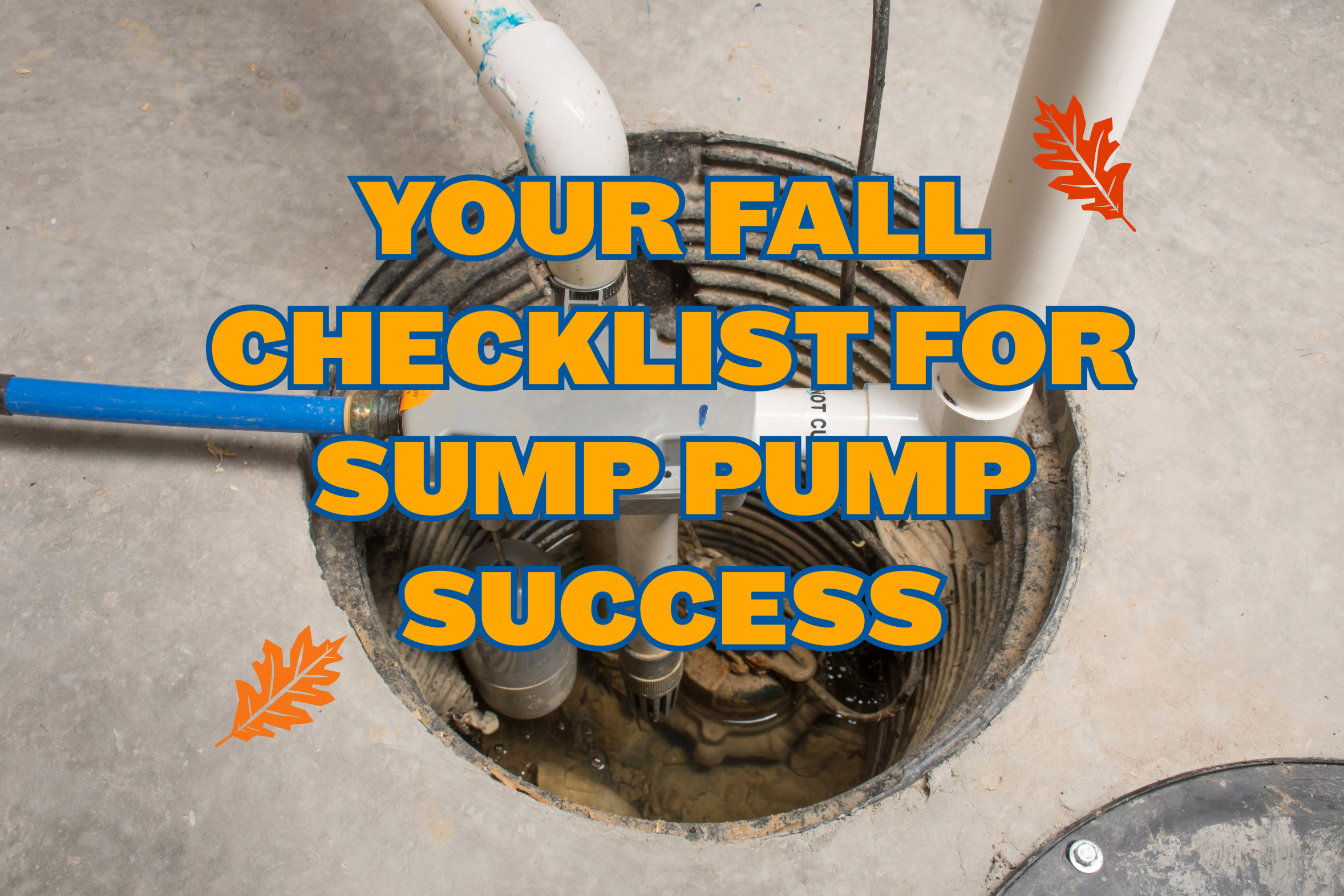Sump pumps are important throughout the year, but they also play a crucial role during fall and winter in regions with cold weather and snowfall. This means that for us Ohioans, taking care of our sump pumps is a must. So, here are some tips from your Bellbrook Plumbing & Drain experts to help your sump pump perform well in the colder months ahead.
YOUR FALL CHECKLIST FOR SUMP PUMP SUCCESS:
- Remove the Cover: To access the sump pump pit or basin, remove the cover first. Once the lid is off, take a look inside. If you see any debris, mud, or rocks, carefully remove them. These foreign objects can block the sump pump and cause overflow problems.
- Inspect the Drain Hose: Another important step is to carefully inspect the drain hose. Ensure that it is securely connected and clear of any blockages or ice buildup (especially in the winter). If the drain hose is blocked or frozen, it can cause your sump pump to run continuously, as it won’t be able to remove the accumulated water from the pit effectively.
- Check Out the Inlet Screen: Make sure water can enter your sump pump’s pit, and clean the inlet screen. If the screen is blocked, water won’t reach the pit, which could lead to a flooded basement.
- Examine the Float Mechanism: To ensure your sump pump functions properly, it’s important to check the float mechanism. This component determines when the pump activates to remove excess water. Make sure the float can move freely without any obstructions. A malfunctioning float can result in the pump failing to operate when needed or running continuously, which can potentially damage the pump’s engine over time.
- Check the Discharge Pipe: Make sure the water discharged by your sump pump flows away from your house. When you hear the pump running, check where the water goes outside. It should be directed at a safe distance from your home. If it’s too close, water could seep back, making the pump run continuously and inefficiently. This, of course, can cause premature wear and tear, shortening its lifespan. Remember, don’t place the discharge pipe too close to your home or other structures; keep it within your property boundaries. You want to avoid discharging water onto your neighbor’s property. Proper drainage within your property is important to avoid inconvenience to your neighbors.
- Try a Test Run: To activate your pump, simply pour a bucket of water into the sump pit. Then, its performance must be closely monitored to ensure efficient water removal. Afterward, check the discharge pipe outside to confirm proper water disposal. If the pump fails to run, make sure it is still connected to the power source and that its power cord is in good working condition.
- Prepare for Unexpected Situations: Having a backup battery or generator is very useful, especially during heavy rainstorms that might cause a power outage. Having a backup plan gives you peace of mind, knowing everything will be taken care of if the power goes out or something unexpected happens.
To make sure your sump pump works well during the coldest months, it’s important to properly winterize it while you can. This will help protect your home from potential water damage in cold weather.
Having trouble with your sump pump? Don’t delay; call Bellbrook Plumbing & Drain today at (937) 240-3731 or schedule an appointment online now by clicking here!

